The History Book Club discussion
PRESIDENTIAL SERIES
>
GLOSSARY - GRANT
date newest »
newest »
 newest »
newest »
 Here is a nice summary of the Battle for Mexico City:
Here is a nice summary of the Battle for Mexico City:Rather than have Taylor press further south, Polk called for an invasion of central Mexico designed to capture the capital at Mexico City. To command this campaign, Polk selected General Winfield Scott and assigned him 12,000 troops. Scott sailed south and decided to land his forces at Collado Beach near the port of Veracruz. Sending his troops ashore in the US Army’s first major amphibious landing, Scott quickly laid siege to the city. Veracruz held out for twenty days before finally surrendering. In the wake of its fall, Scott left a small garrison and quickly began marching inland with 8,500 men to escape the diseases of the coast.
On April 18, Scott encountered the 12,000-man army of General Santa Anna at the fortified heights of Cerro Gordo. Though outnumbered, Scott attacked the heights after one of his engineers, Robert E. Lee, located a mountain trail that allowed the army to flank Santa Anna’s position. Surprising the Mexicans, the Americans put them to rout inflicting 4,000 casualties, as well as killing one general and capturing five.
Contreras & Churubusco
As Scott was achieving his victory, Commodore Matthew C. Perry and the US Navy were successfully attacking Tuxpan on the coast. Perry’s forces would later attack Tabasco in June 1847. Continuing their march inland, Scott’s army occupied Puebla in May before pushing on toward the capital. Reaching the outskirts of Mexico City, the Americans assaulted the town of Contreras on August 20, 1847, routing forces under General Gabriel Valencia. Later that day, Scott attacked the Mexican lines at Churubusco. Fighting from behind convent walls, the Mexicans beat off repeated American assaults until their ammunition began to run out and their line was broken.
Molino del Rey
Now only five miles from Mexico City, Scott advanced to the edge of the city. On September 8, 1847, believing there to be a cannon foundry in the Molino del Rey (King’s Mills), Scott ordered General William Worth to attack and destroy any munitions that were found. After hours of heavy fighting, US forces captured the mills and destroyed the foundry equipment. The battle was one of the bloodiest of conflict with the Americans suffering 780 killed and wounded and the Mexicans 2,200.
Battle of Chapultepec
Scott now sought to take the city, however to do so would require storming Chapultepec Castle. Perched on top of a 200 foot hill, the castle dominated the western defenses of the city. On September 12, American artillery commenced firing on the castle, ceasing only when sun set. The next morning, two columns moved out, each led by a 250-man storming party, one of which included a contingent of US Marines. After a delay waiting for ladders, the American troops swarmed over the walls of Chapultepec, driving back the Mexican defenders. The first to reach the top of the wall was George Pickett, later to achieve fame in the Civil War.
Fall of Mexico City
As US troops poured into the castle, the Mexicans fled back the gates of the city. Pursued by Scott’s men, their resistance stiffened around the Belén and San Cosmé Gates. Led by the Mounted Rifles from General John Quitman’s division, American troops breached the Belén Gate around 1:20. The fighting around San Cosmé lasted until 6:00, when, with the aid of a howitzer commanded by Lt. Ulysses S. Grant, the gate was taken. After a long day of fighting, Scott had accomplished his mission. In doing so, he had won six battles, usually against larger forces, while operating exclusively in hostile country. Scott’s success was such that his campaign is still studied by military planners today.
(Source: http://militaryhistory.about.com/od/m...)
 I thought I would repeat Smith's information on how the Civil War army was structured:
I thought I would repeat Smith's information on how the Civil War army was structured:Company (100 men)-captain
Regiment (10 companies)-colonel
Brigade (4 regiments)-Brigadier General
Division (3-4 brigades)-Brigadier or Major General
Corp (2 or more divisions)-Major General
The armies of the Potomac and Ohio had several corps in them.
 Bio on Washburne. I put it here because he is in Grant's administration, so better be safe than sorry.
Bio on Washburne. I put it here because he is in Grant's administration, so better be safe than sorry.Washburne(brother of Israel Washburn, Jr., Cadwallader Colden Washburn, and William Drew Washburn), a Representative from Illinois; born in Livermore, Androscoggin County, Maine, September 23, 1816; attended the common schools; printer’s apprentice; assistant editor of the Kennebec Journal, Augusta; studied law at Kents’ Hill Seminary in 1836 and at Harvard Law School in 1839; was admitted to the bar in 1840; moved to Galena, Jo Daviess County, Ill., in 1840 and commenced the practice of law; delegate to the Whig National Conventions in 1844 and 1852; unsuccessful candidate for election in 1848 to the Thirty-first Congress; elected as a Whig to the Thirty-third Congress and reelected as a Republican to the eight succeeding Congresses and served from March 4, 1853, to March 6, 1869, when he resigned; chairman, Committee on Commerce (Thirty-fourth and Thirty-sixth through Fortieth Congresses), Committee on Appropriations (Fortieth Congress); appointed as Secretary of State in the Cabinet of President Grant, but resigned a few days afterward to accept a diplomatic mission to France; upon the declaration of the Franco-Prussian War he protected with the American flag the Paris legations of the various German states; remained in Paris during the siege and was the only foreign minister who continued at his post during the days of the Commune; protected not only Germans but all the foreigners left by their ministers; served as Minister until 1877, when he returned and settled in Chicago, Ill.; engaged in literary pursuits; died in Chicago, Ill., October 23, 1887; interment in Greenwood Cemetery, Galena, Ill.
(source: http://bioguide.congress.gov/scripts/...)
 Here is a map of the battle of the Crater at Petersburg:
Here is a map of the battle of the Crater at Petersburg:[image error]
(source: http://en.wikipedia.org/wiki/Siege_of...)
Image of the crater:
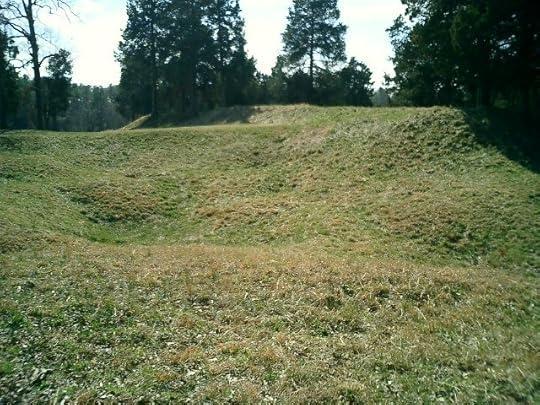
(source: http://en.wikipedia.org/wiki/Battle_o...)
http://upload.wikimedia.org/wikipedia...
 I visited the crater and it was pretty amazing. Part of the "mine shaft" is there along with the crater. It was still hard to image troops going down into the crater (instead of around) and the rebels shooting down at them. Very tragic. Grant was not there at the time.
I visited the crater and it was pretty amazing. Part of the "mine shaft" is there along with the crater. It was still hard to image troops going down into the crater (instead of around) and the rebels shooting down at them. Very tragic. Grant was not there at the time.NPS site link:
http://www.nps.gov/history/history/on...
 Grant's early Cabinet:
Grant's early Cabinet:Vice President
Schuyler Colfax
(http://millercenter.org/academic/amer...)
State
Eli Washburne:
(http://millercenter.org/academic/amer...)
Hamilton Fish:
(http://millercenter.org/academic/amer...)
Treasury
Alexander Stewart
(http://en.wikipedia.org/wiki/Alexande...)
George Boutwell
(http://millercenter.org/academic/amer...)
Navy
Adolph Borie
(http://en.wikipedia.org/wiki/Adolph_B...)
George Robeson
(http://millercenter.org/academic/amer...)
Interior
Jacob Cox
(http://millercenter.org/academic/amer...)
Post Master
John Creswell
http://millercenter.org/academic/amer...)
Attorney General
Ebenezer Hoar
(http://millercenter.org/academic/amer...)
War
John Rawlings
(http://millercenter.org/academic/amer...)
William Belknap
(http://millercenter.org/academic/amer...)
 Second Term changes:
Second Term changes:Vice President
Henry Wilson
(http://millercenter.org/president/gra...)
Treasury
Ben Bristow
(http://millercenter.org/president/gra...)
Lott Morrill
(http://millercenter.org/president/gra...)
Interior
Columbus Delano
(http://millercenter.org/president/gra...)
Zach Chandler
(http://millercenter.org/president/gra...)
Postmaster General
Marshall Jewell
(http://millercenter.org/president/gra...)
James Tyner
(http://millercenter.org/president/gra...)
Attorney General
George Williams
(http://millercenter.org/president/gra...)
Edward Pierrepont
(http://millercenter.org/president/gra...)
Alfonso Taft
(http://millercenter.org/president/gra...)
War
James Cameron
(http://millercenter.org/president/gra...)
Alfonso Taft
 Smith talks about Grant's influence on engineering and architecture. Here is a picture of Ead's bridge:
Smith talks about Grant's influence on engineering and architecture. Here is a picture of Ead's bridge:
(source: http://en.wikipedia.org/wiki/Eads_Bridge)
 Smith talks about the Old Executive Building being part of the Grant style architecture. I thought you would enjoy this picture:
Smith talks about the Old Executive Building being part of the Grant style architecture. I thought you would enjoy this picture: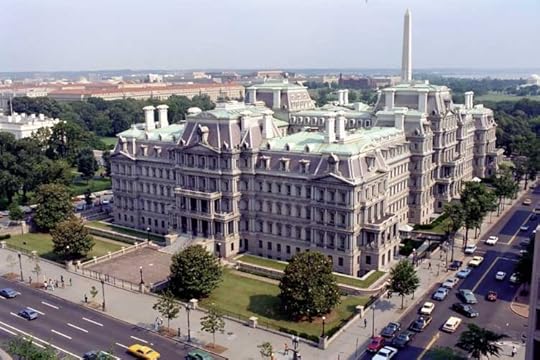
(source: http://en.wikipedia.org/wiki/Eisenhow...)
It is formally called the Second Empire style architecture.
Books mentioned in this topic
The Day Freedom Died: The Colfax Massacre, the Supreme Court and the Betrayal of Reconstruction (other topics)Grant (other topics)
Authors mentioned in this topic
Charles Lane (other topics)Jean Edward Smith (other topics)

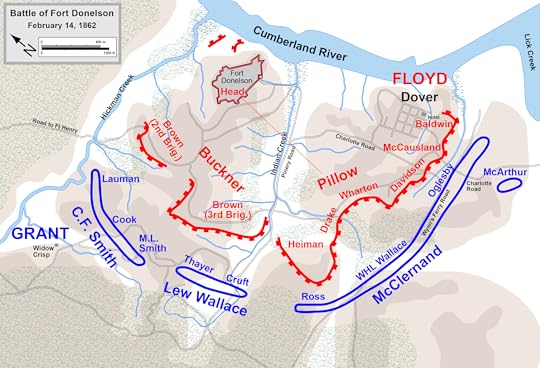






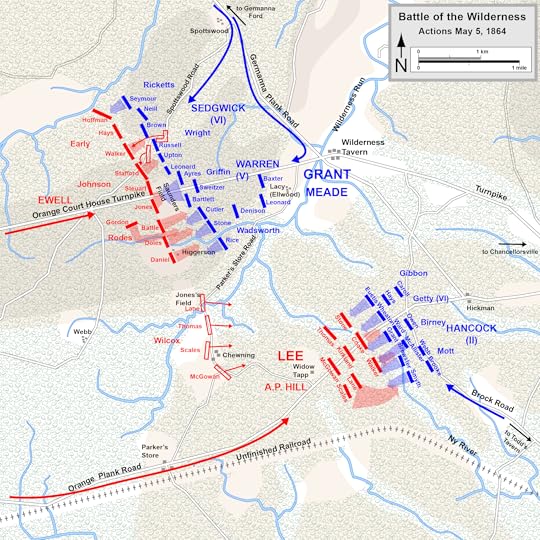


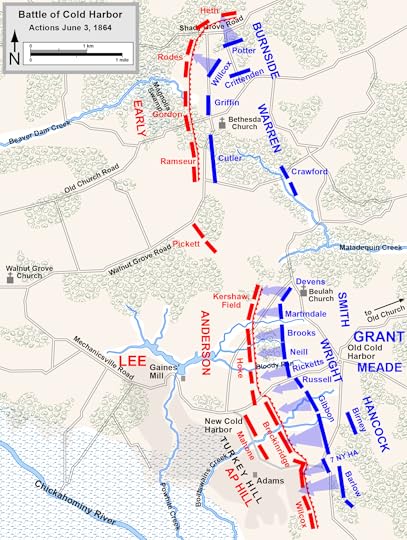




This is a thread to add links, urls, books which would aid the reader of Grant by Jean Edward Smith.
Having such a thread assists the membership in being able to refer to ancillary material without it impacting the flow of the group discussion.
Additionally for those folks who would like to have expansive and/or side discussions which may go beyond the scope of the book itself, please use this thread as your off-topic location for your posts.